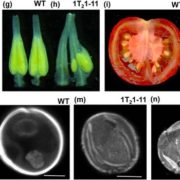
MutS-Homolog2 silencing generates tetraploid meiocytes in tomato (Solanum lycopersicum)
Blog, Plant Science Research Weekly, Research, Research BlogPlant Direct. DNA repair occurs by several independent mechanisms, one of which is the mismatch repair (MMR) pathway. In prokayotes, MutS is a component of the mismatch repair pathway; homologous proteins in eukaryotes are known as MSH (MutS homologs). Sarma et al. set out to develop a hypermutable tomato…
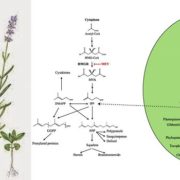
Dynamics of monoterpene formation in spike lavender plants
Blog, Plant Science Research Weekly, Research, Research BlogMetabolites. Terpenes are derived from isopentenyl diphosphate (IPP) and dimethylallyl diphosphate (DMAPP), which are produced in two separate pathways: in the cytosol (via mevalonate, MVA) and the plastid (via methyl-D-erythritol-4-phosphate, MEP). The products of terpene metabolism include numerous…
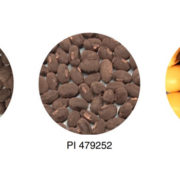
Elevation of soybean seed oil content through selection for seed coat shininess
Blog, Plant Science Research Weekly, Research, Research BlogNat. Plants. Soybean is the world’s sixth most produced crop and is economically important as a source of protein and oil in animal and human food, as well as having industrial applications. Domestication of soybean has resulted in the absence of seed coat bloom, a powdery coating containing hazardous…
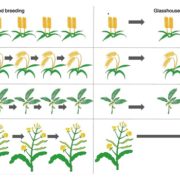
Speed breeding is a powerful tool to accelerate crop research and breeding
Blog, Plant Science Research Weekly, Research, Research BlogNat. Plants. The current rate of crop plant breeding, limited by the long generation time of crop plants, is insufficient to address the needs caused by the enormous increase in the human population accompanied by climate change. Watson et al. have recently presented a method called ‘Speed breeding’…

Perception and reading strategies of scientific papers depends on academic career stage
Activities, Blog, Education, Plant Science Research Weekly, Research, Research Blog, UndergraduatePLOS One. Katharine Hubbard (@KEHplantsci) and Sonja Dunbar (@PlantSciSonja) are enthusiastic proponents of student-centered teaching, including guiding undergraduate students through the reading of scientific papers. In this new work they’ve evaluated how undergraduate students compare to graduate…

Ten simple rules for drawing scientific comics
Blog, Plant Science Research Weekly, Research, Research BlogPLOS Comp. Biol. No doubt, science communication is a struggle for many scientists and science institutions. There is an increasing need to improve public science understanding and/or engagement. Good science communication is crucial to help recruit next generation scientist, highlight science’s role…
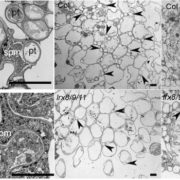
LRX Proteins play a crucial role in pollen grain and pollen tube cell wall development
Blog, Plant Science Research Weekly, Research, Research BlogLeucine-rich repeat extensins (LRXs) are proteins involved in cell wall growth and are therefore required for plant growth processes. Fabrice et al. use pollen tube development in Arabidopsis thaliana as a vegetative plant growth model to elucidate the role of LRXs in these cellular processes. All 4…

Disruption of actin filaments in Zea mays by bisphenol A depends on their crosstalk with microtubules
Blog, Plant Science Research Weekly, Research, Research BlogBisphenol A (BPA) is known for its negative impact on mammalian cell lines and, recently, as an emerging environmental pollutant. BPA, readily taken up and metabolized by plants, results in many growth and developmental defects, from disrupted mitotic microtubule (MT) arrays to altered calcium fluctuations…
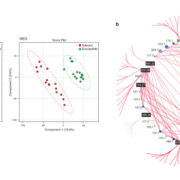
Ash leaf metabolomes reveal differences between trees tolerant and susceptible to ash dieback disease
Blog, Plant Science Research Weekly, Research, Research BlogOver the last two decades, Ash dieback (ADB) has been sweeping through Europe killing or damaging a large proportion of European common ash trees (Fraxinus excelsior). ADB results from infection by wind borne spores of the fungus Hymenoscyphus fraxineus. As ADB spread and the scientific research…

